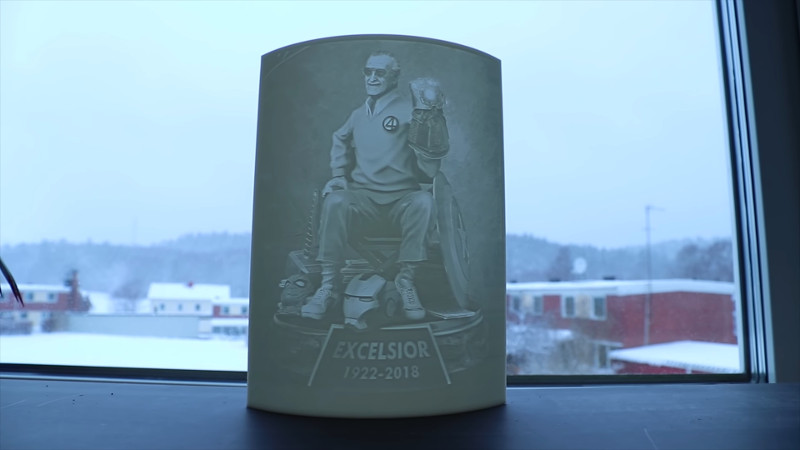Historically speaking, lithophanes are images made in porcelain with an etching or moulding process, in which an image is visible when backlit due to the varying thickness of the material. Porcelain isn’t the easiest thing to work with, but thankfully for those of us in the present, 3D printers are here to make everything better. [RCLifeOn] has been experimenting with printing lithophanes with great results.
The trick to printing a good lithophane is all in the preparation. It’s important to pick an image that looks good in greyscale, as this is not a process that reproduces color in any way. [RCLifeOn] then discusses the finer points of printer setup to get a nice looking print. Layer heights should be as small as possible to avoid visible vertical bands, and the lithophane should be printed in a vertical orientation, to avoid the print sagging due to a lack of support. Infill is best set to 100%. Most importantly, the printer should avoid crossing the outline of the print to avoid any stringy plastic artifacts spoiling the final product.
It’s a great guide that should help even a 3D printing novice create a great print with the minimum of fuss. A lithophane can make a wonderful gift and is also a good test of a printer’s capabilities, due to the fine detail required. We’ve seen them produced before too, in a wonderful lightbox configuration. Video after the break.

















I have an implementation of this in my Webshop laser.im-pro.at :-)
fwiw it’s quite easy to mount these on nightlights. Just sayin’
Nor on nightsticks.
Han Solo frozen in Carbonite too cliche?
Maybe, but it would still be SICK.
I made a 3D printed, IR-controlled, RGB-lit, Mario-themed nightlight for my nephew’s birthday a few years ago. I used this technique. It was a bottomless hollow cube that was printed upside down and each side had a different image from the original Mario Bros. game. The top (printed as the bottom) had a visible image of Mario embossed on the inside and was encircled with M’s. The M’s went entirely through the print so light would shine through and create a pattern on the ceiling.
My nephew loved it!
It did take some experimentation to get the wall thicknesses right to allow for several distinct levels of opacity.
We need photos of this — it sounds awesome!
Unfortunately, I don’t have the photos posted anywhere on the web. I wish I could attach some here.
where’s the thumbs up button?
you can do this super easy with windows 3d builder. just ctrl-v any photo into it and it opens up a wizard.
FreeCAD has a plugin, Lithophane Workbench https://forum.freecadweb.org/viewtopic.php?t=30496
Hackaday litterally makes my day everyday. And I hack a lot. But Hackaday thanks so much for what it is you do.
FWIW, the most amazing contrast you are ever going to get comes from using silver filament. Check it out: https://www.thingiverse.com/thing:3355081